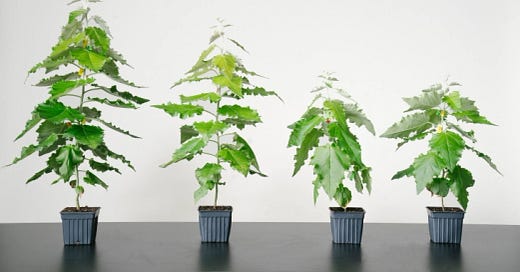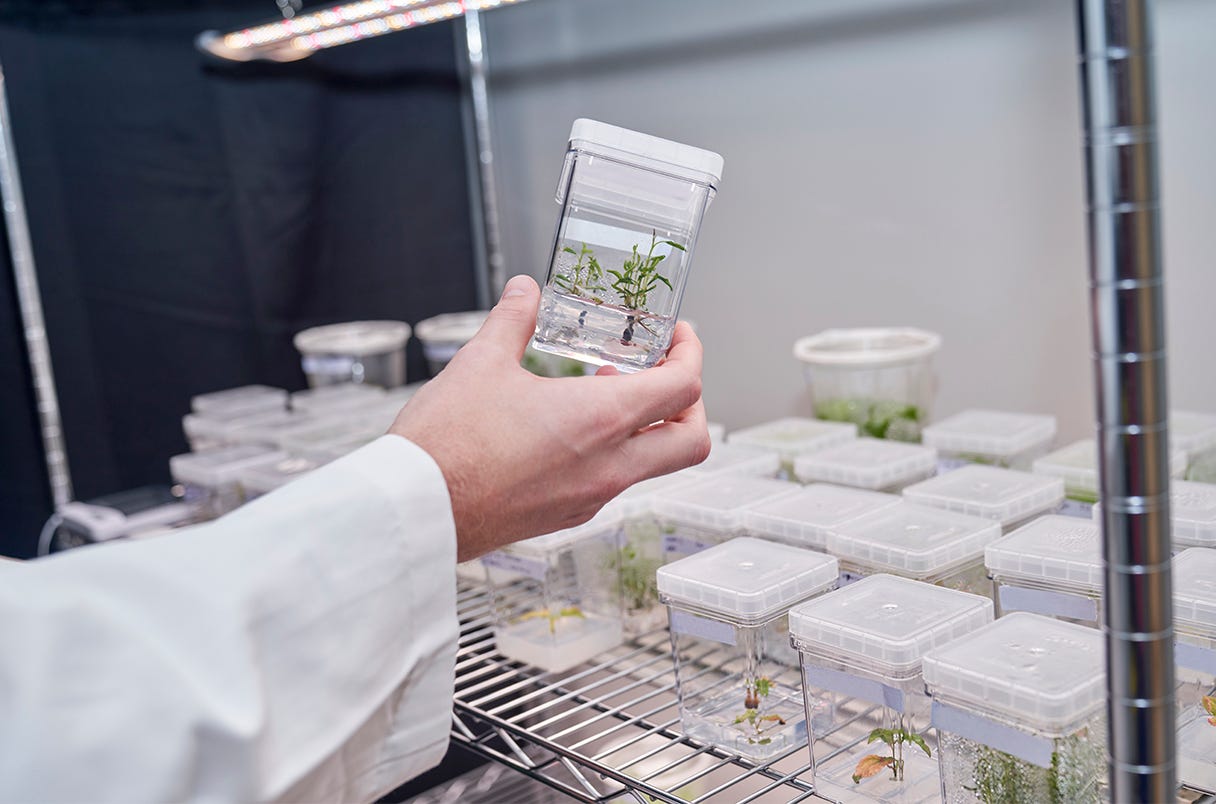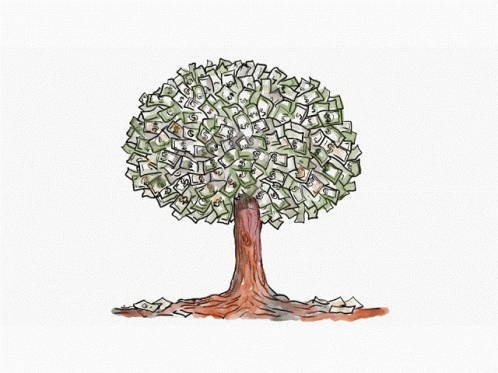Year 2049 is the weekly newsletter that discusses the impactful innovations, discoveries, and research shaping our future.
If this was forwarded to you, subscribe for free to get a new story in your inbox every Friday.
Hello friends 👋
Welcome to the first-ever Reader’s Choice edition where the topic has been selected by you.
Genetically-enhanced trees that store more CO₂ took first place, while Vertical Farming finished as a very close second. I’ll definitely talk about Vertical Farming in a future edition, so don’t worry if your choice didn’t win.
Read along and enjoy!
– Fawzi
Today’s Edition
Comic: Genetically-enhanced trees in the wild
Story: Living Carbon
Poll Results: Which authentication method do you prefer using?
Short Video: Top 10 countries that generate electricity from wind and solar
Comic
Story: Living Carbon
Breathe in, breathe out
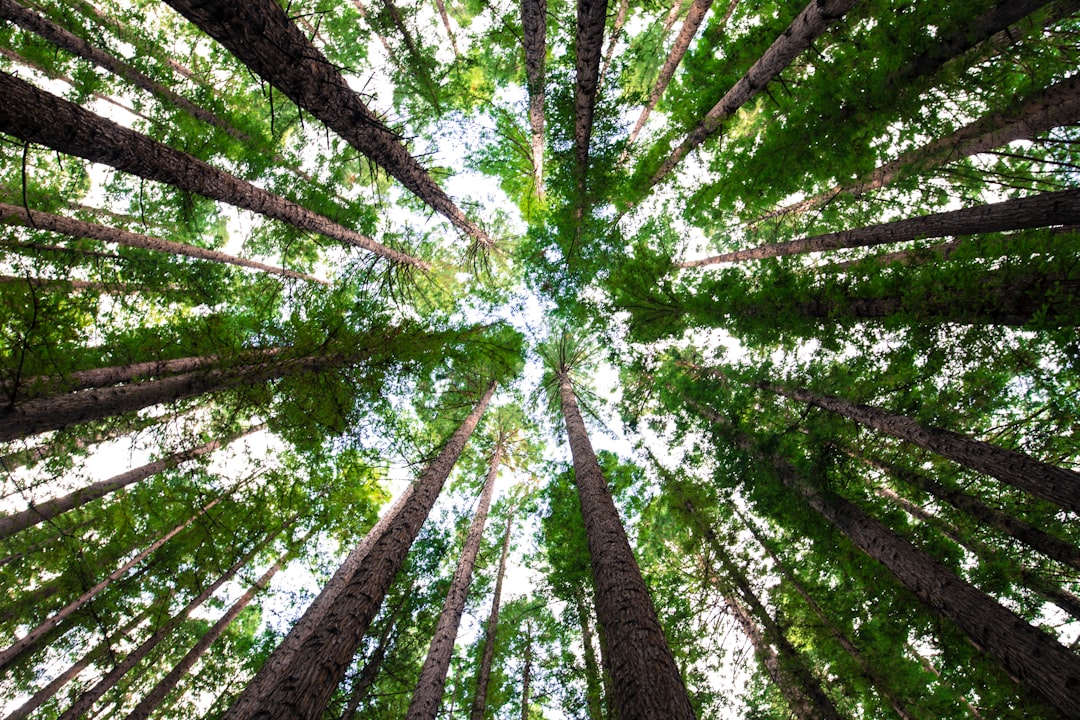
Photosynthesis is one of the fundamental building blocks of life on Earth. Plants convert sunlight, water, and CO₂ into glucose and oxygen to grow to form our ecosystems and make life on Earth possible.
But photosynthesis has its flaws. Sometimes, RuBisCo enzymes in plants mistakenly use oxygen instead of CO₂ when facilitating the reactions that produce glucose (aka the Calvin cycle). This creates a compound known as phosphoglycolate which needs to be broken down even further to produce glucose.
Phosphoglycolate gets broken down through photorespiration, a wasteful reaction that releases CO₂ back into the atmosphere instead of fixing it in the plant. Hot and dry conditions increase the likelihood of this occurring.
Living Carbon wants to enhance trees
Planting trees is one of the many solutions to remove excess CO₂ from our atmosphere. But can we optimize trees by minimizing or even suppressing photorespiration so they can store more CO₂?
Living Carbon, a biotech startup based in California, is creating transgenic trees that minimize photorespiration. The company, founded by Maddie Hall and Patrick Mellor in 2019, has raised $15 million to date.
We aim to harness the power of synthetic biology to enhance plants’ natural ability to draw down and sequester carbon, thereby positively affecting climate change.
– Living Carbon
Plants that minimize photorespiration aren’t unnatural. Some types of plants, known as C4 plants and CAM plants, are naturally equipped to suppress photorespiration but they only make up 10% of total plant species. About 90% of plant species are C3 plants which don’t have a natural mechanism to minimize photorespiration.
C3 plants: rice, wheat, soybean, trees
C4 plants: sugarcane, corn, sorghum
CAM plants: cactus, pineapple, jade plant
Photorespiration isn’t a problem for C4 and CAM plants because their carbon fixation process is separated from the Calvin cycle, unlike C3 plants.
🔗 Read about how C4 and CAM plants minimize photorespiration in more detail
Living Carbon’s initial experiments
The scientists at Living Carbon created “photosynthesis-enhanced” poplar trees to minimize photorespiration and increase carbon fixation. Genes from pumpkins and algae were introduced to the poplar tree genomes:
Inhibiting the glycolic transporter which sends phosphoglycolate out of the chloroplast to be broken down by photorespiration. This would reduce the amount of CO2 leaving the plant because photorespiration is inhibited.
Enhancing enzymes in the chloroplast to convert phosphoglycolate back into CO₂ within the plant.
The enhanced poplar trees grew alongside unmodified ones in a controlled greenhouse environment. Living Carbon shared the results in a research paper which hasn’t been peer-reviewed yet:
Increased plant height: the enhanced poplars grew more than their unmodified counterparts → 225cm (89in) compared to 190cm (75in).
Higher CO₂ assimilation rate: the enhanced poplars absorbed more CO₂.
Reduced photorespiration: lower amounts of phosphoglycolate were transported out of the chloroplast, meaning photorespiration was reduced.
Increased biomass: the best-performing enhanced tree had 53% more biomass than the unmodified ones, a strong indicator of increased carbon storage.
Here’s what those differences look like visually:
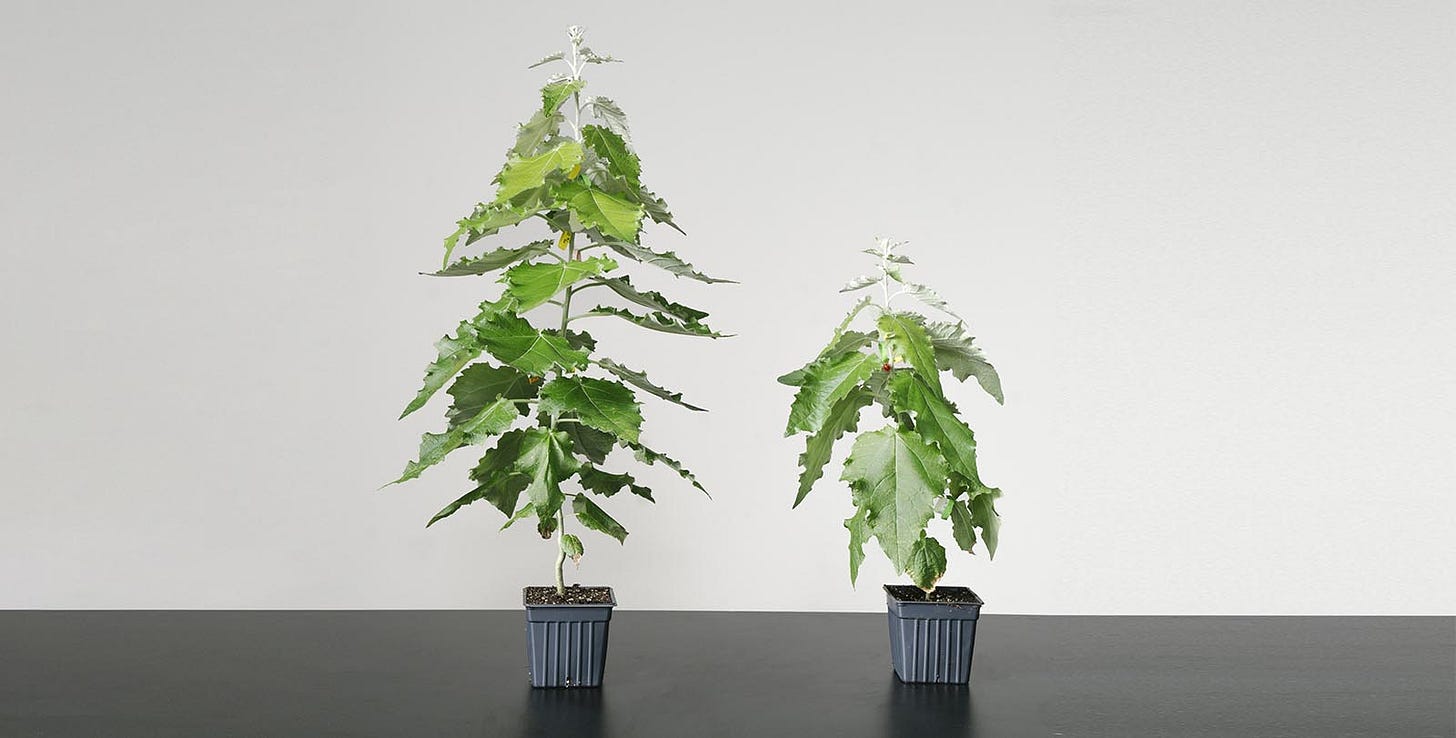
Living Carbon’s business model
While the company’s enhanced trees still need thorough research and testing, Living Carbon has outlined the different ways it wants to deploy its creations:
Creating carbon removal projects by planting its photosynthesis-enhanced trees in abandoned or degraded land. Companies will be able to buy carbon credits from Living Carbon to achieve their net-zero emissions goals.
Partnering with private landowners by paying them to plant photosynthesis-enhanced trees on their land while retaining the rights to sell the carbon credits.
Offering their R&D services in plant biotechnology to other companies. For example, a farming corporation may want to develop enhanced wheat or soybeans, whose yields are also affected by photorespiration.
Risks and challenges
Living Carbon’s initial lab results look promising, but there’s a long road ahead before we can reliably deploy their photosynthesis-enhanced trees to fight climate change:
Safety and long-term effects: as with any genetic modifications, it’s difficult to simulate any long-term effects on real-life ecosystems where conditions are much more unpredictable than in a controlled greenhouse environment. Living Carbon announced a four-year partnership with Oregon State University to field test its trees which should shed light on some of these questions.
CO₂ re-release: Living Carbon’s trees don’t live longer than regular trees, so there’s still the same risk of releasing carbon back into the air if they burn or decay. However, Living Carbon’s VP of biotechnology says the company is “heavily engaged in a number of research projects to find a solution to keep this fixed carbon in plants for longer”.
Living Carbon’s journey is only beginning so I’ll keep you updated on their latest work and findings in upcoming Year 2049 editions.
Deep dive
If you enjoyed today’s story, I’ve compiled some additional links to satisfy your curiosity:
Q&A with Living Carbon’s VP of biotechnology Yumin Tao (Interesting Engineering) – highly recommended
Poll Results
In the previous edition, we learned about the new passwordless standard that is set to be adopted by Apple, Google, and Microsoft.
I asked you which authentication method would you use if you had the option, and more than 70% of you can’t wait to get rid of passwords.
Short Video
Top 10 countries that generate their electricity from wind and solar 🌞💨
The share of electricity generated from solar and wind power is increasing. Here are the top 10 countries that generate most of their electricity from these renewable energy sources:
I’ve been regularly posting short videos on TikTok and YouTube, go check them out!
If you use Instagram Reels, I can start posting them there too. Just reply and let me know.
Previous episodes you might enjoy
You can also check out all previous Year 2049 editions in chronological order to learn about other innovations shaping our future across all aspects of life.
Correction made on June 9: The initial version of the article mentioned that Living Carbon’s is using gene editing, which was incorrect. Living Carbon is creating transgenic trees that involve introducing foreign genes into another organism, as opposed to modifying the existing genome of a poplar tree.
How would you rate this week's edition?


